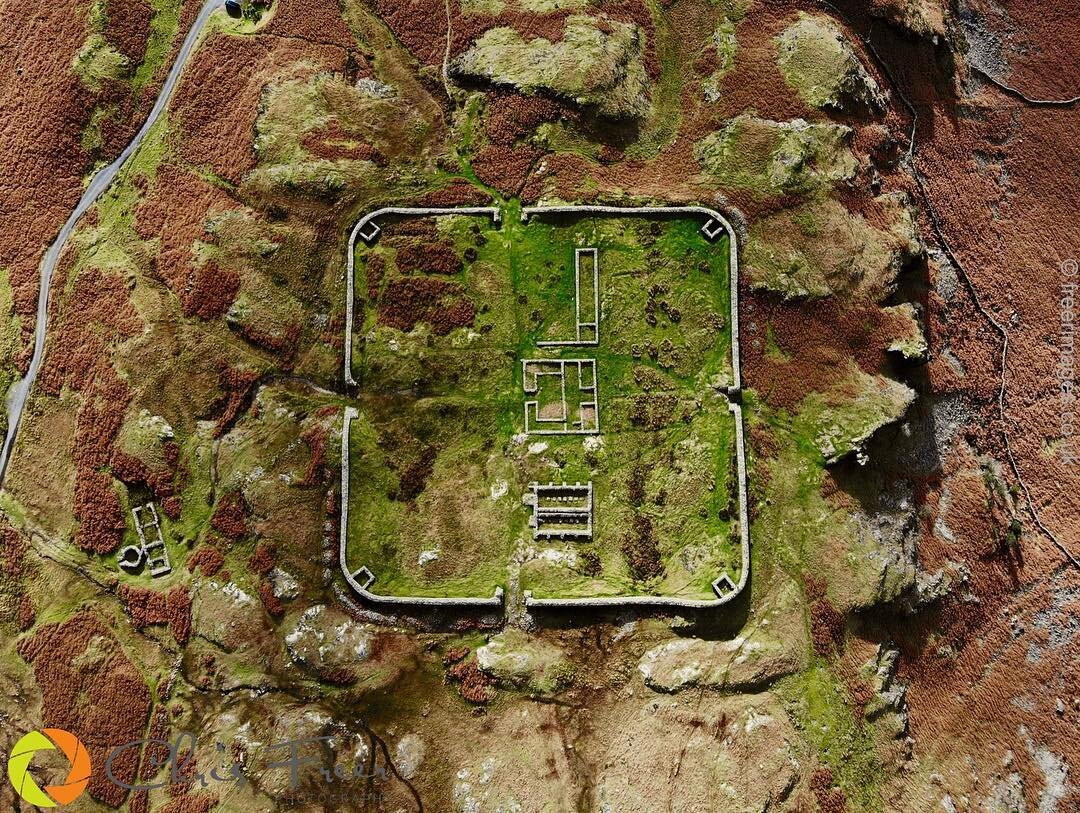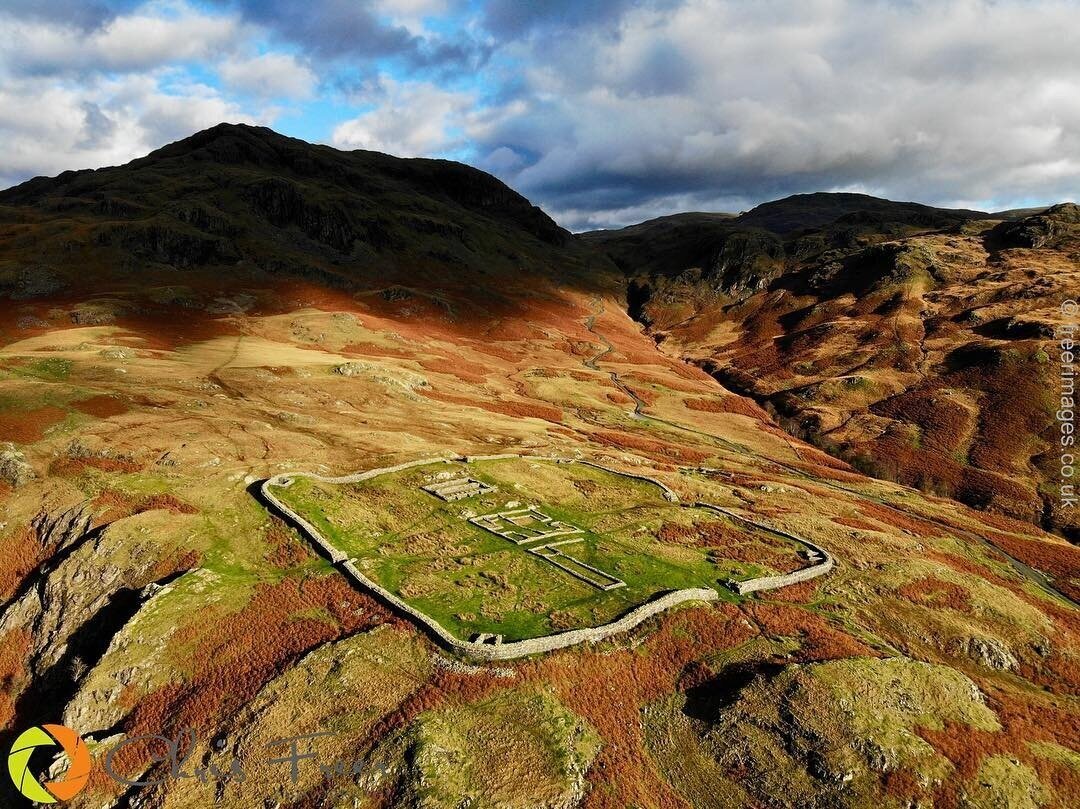The Ultimate Lakeland Drone Zones
Drones are the new frontier of photography, giving us brand new views of familiar places and a bird’s eye perspective on the places we love. As with any new technology, there are always arguments for and against their potential uses, but for those of us who just want another way to explore this beautiful area, then drones present an exciting way of doing just that. A few years ago, drone flying was a rather expensive business, but with prices becoming more and more accessible, it’s now possible for many of us to experience the joy of getting some ‘eyes in the sky. For under £400 you can get all the equipment you need to make a great start on taking some quality footage… Take a look at our top five spots to capture incredible shots of the Lakes from above…
1. St Herbert’s Island
St Herbert’s is a beautiful island with a fascinating history and looks captivating in all seasons. The pointed oval-shaped island is surrounded by the glimmering, slate blue shade of Derwent Water, making for particularly striking shots in Autumn. The four-acre isle is now uninhabited, making it an easy target for drone flying, although this has not always been the case. Based less than a mile from the lakeshore, paddlers are welcome to land on the island that was once inhabited by a hermit, ‘St Herbert’, who brought Christianity to the area in 685 AD. The island is also famous for being the inspiration behind Beatrix Potter’s ‘The Tale of Squirrel Nutkin’, as well as a filming site for both the 1974 and 2016 iterations of the Swallows and Amazons films, so it’s a great day out, and definitely one to tick off your next Lakeland visit list! If St Herbert’s Island is on your ‘capture list’, then The Mary Mount Hotel is a fantastic place to stay, as is Lodore Falls, and YHA Keswick offers great value for money too. To get out to the island itself, you can hire a kayak or canoe from Keswick Canoe & Bushcraft, Nichol End Marine, or Derwent Water Marina!
2. Haweswater
Those of you who have been frequenting the lakes for many years may often have sought out this quieter corner of the county on particularly busy weekends in summer, when the idea of crowds and queues in coffee shops don’t quite seem like the best way to spend your Saturday… Haweswater was always a natural lake of about 2.5 miles long, but the now 4.5-mile long reservoir is steeped in history and controversy. It was 1929 when the Haweswater Dam was first constructed, following much public outcry at the prospect of Mardale Valley being flooded for the purpose of supplying water to the urban areas of North-West England. Our old friend Alfred Wainwright had some choice words to say on the matter, as I’m sure you can imagine. The old farming villages of Mardale Green and Measdale were pulled down and lost forever, but can still be seen when the reservoir waters are low, making for some rather emotive historical aerial photography. This history of this iconic Lakeland valley has inspired many a novel, and a deeper understanding of the Mardale Valley history will surely invite a more profound day of filming and shooting in the area. The valley is still beautiful of course, albeit in a changed state, and is well worth a visit; through the windy lanes, past the iconic Haweswater Hotel, up to the valley head for a glimpse of the surrounding fells, shimmering lake, and perhaps the remains of the forgotten villages underneath.
3. Sharp Edge
Sharp Edge - Photo by Stuart Hedley Packer (@stuhedley)
Sharp Edge probably features on more Lakeland articles than it doesn’t, due to its stunning natural form, associated stories of triumph and tragedy, and its recognisable shape that can be seen from miles around. The intimidating climb on Blencathra is an absolute thrill to behold and to explore, both on foot and with a camera. While it should be said that this iconic feature is not to be undertaken light-heartedly, it is still possible to capture its majesty and beauty without putting yourself or those around you in a sticky situation. If in doubt, follow a reliable walking guide, and always take plenty of warm clothes, navigation tools, a map, compass, whistle, water, and food. Sharp Edge makes our top five capture list for drones, because an aerial journey up the crest of this knife-edge, offers you a breathtaking view of both sides of the steeply banked ridge. The best local stays are Aura, and The Beeches Guest House - take our word for it!
4. Hardknott Roman Fort
This remote Roman Fort offers an exciting chance to step back in time in the Western Lakes, with the dramatically positioned ruins giving you a perfect excuse to make the journey over to the magical Eskdale Valley (as if we needed another reason!) The fort was founded under Hadrian’s rule in the 2nd century, and has been well-preserved, including the outlines of a bathhouse, kitchen, bakehouse, and commandant’s quarters, and was used as a resting place for patrols and travellers. The fort looks out over the Irish Sea in the distance, the roman road to Ravenglass, and the Eskdale Valley in the foreground. All of this history and beauty can be captured from the fort itself, situated a short way up the infamous Hardknott Pass. The Hardknott Pass is quite an ambitious drive, but the pass can be accessed on foot from the valley floor in Eskdale too, where there are plenty of places to eat and stay. While a wander around the grounds of the fort will give you a great experience, the best way to see the impressive remains is undoubtedly from above!
5. Blea Tarn
A trip up to Blea Tarn on foot or in a vehicle will already give you some spectacular views from a good vantage point before you’ve even so much as taken your drone out of its case! A natural pass between Little Langdale, and Great Langdale - the tarn sits like a jewel in the crown of Lakeland. A particularly fantastic location for winter, when there is a sprinkling of snow on the Langdale Pikes and the Crinkle Crags, a flight around Blea tarn also allows you to capture some great ‘emerging’ shots of the surrounding valleys, coming out of the wooded bank on the Western side. There is a car park to the East, and the site is a short distance from The Old Dungeon Ghyll, to the North, and The Three Shires to the South-East.
Just a few points to mention before you head out there, make sure you…
Register as a drone flyer.
Have the appropriate licenses.
Have all the necessary safety equipment for flying your drone.
Follow the drone code at all times.




